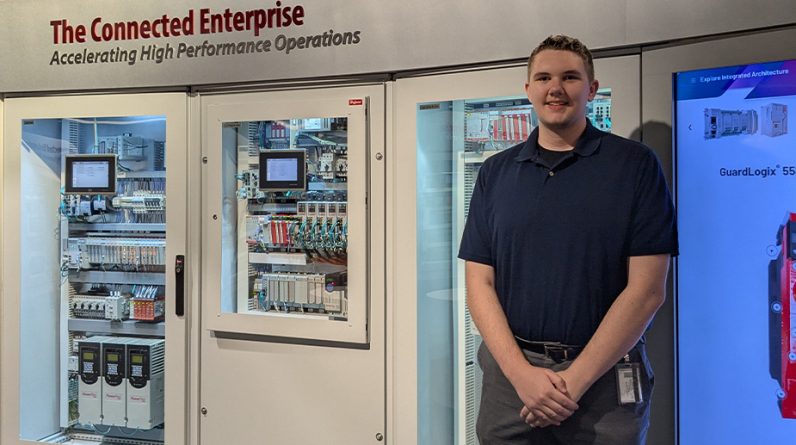
Artificial intelligence is a powerful creative force fueling groundbreaking advancements in healthcare, business automation, data analytics and AI observability. This creativity, however, also comes with an increase in risk. Cybercriminals and malicious individuals are taking advantage of AI’s capabilities to carry out manipulative actions and advanced cyberattacks that can have catastrophic effects on individuals and organizations.
As these threats continue to grow in size and complexity, businesses turn to advanced AI observability solutions, such as those offered by technology company Dynatrace Inc., to proactively address risks, maintain resilience and stay ahead of potential disruptions. AI observability platforms play a crucial role in business resilience. By delivering continuous insights into the performance of applications, infrastructure and security environments, observability platforms can integrate into existing systems, helping prevent issues before they affect customers or business operations.
“In these incredibly complex environments, end-to-end observability is no longer optional,” said Rick McConnell, chief executive officer of Dynatrace, in a recent company video. “It has become mandatory.”
In addition to traditional monitoring, observability offers real-time visibility across intricate settings, ensuring organizations can identify and handle cyber threats and other disruptions, such as operational outages. A prominent illustration is how observability platforms can aid businesses in swiftly rebounding from major events, such as the CrowdStrike outage. Dynatrace, for instance, achieves this success through its AI-powered analytics, which can quickly identify the root cause of an issue, and its automated incident response, which can take immediate action to resolve the problem.
This feature is part of SiliconANGLE Media’s exploration of trends and advancements in AI-driven observability. (* Disclosure below.)
Adopting intelligent AI observability for security and resilience
Staying ahead today means using AI-driven insights and real-time, intelligent AI observability to maintain operational efficiency and security. The 2024 Dynatrace “State of AI” report underscores this fact: 83% of technology leaders now see AI as essential for driving business success, and 82% say AI will play a crucial role in improving threat detection, investigation and response.
Nevertheless, with this growing dependence on AI comes fresh obstacles, as shown by 93% of leaders expressing apprehensions about uncontrolled AI tools, which is especially worrisome due to increased employee access to generative AI technologies.
“AI has become central to how organizations drive efficiency, improve productivity and accelerate innovation,” said Bernd Greifeneder, chief technology officer at Dynatrace, at the time of the report’s announcement. “The release of ChatGPT late last year triggered a significant generative AI hype cycle. Business, development, operations and security leaders have set high expectations for generative AIs to help them deliver new services with less effort and at record speeds. However, as organizations endeavor to realize the expected value, it becomes evident that generative AI requires domain-specific tuning and integration with other technologies, including other types of AI.”
Furthermore, 62% of respondents have modified their job roles and skills, which illustrates how important it is for companies to adopt generative AI and large language models to accelerate digital transformation and add business value. As organizations seek new ways to transform their operations, Dynatrace identifies five key trends shaping the future.
One pivotal trend involves taking a composite approach to AI. This strategy integrates three types of AI — causal, predictive and generative. Why is this approach effective? The short answer is that causal AI identifies the root cause of system problems. Predictive AI can anticipate what might happen next in a system, while generative AI, built on LLMs, can generate different types of content, from text to audio and visual. When these models are combined, they complement one another and enable enhanced analysis, decision-making and automation, according to Dynatrace.
“We have actually created the only AI that is comprised of three types of AI,” said Greifeneder, during a video presentation. “We call it hypermodal AI, and it is actually a combination of causal AI that actually causates through dependencies … does not need any learning [and] does not hallucinate. This gives you the true power to automate the most complex IT systems. Then, in order to predict and prevent, we have a predictive AI … and couple this all with generative AI to make onboarding and use of automation even faster and easier for your teams.”
Late last year, Dynatrace integrated hypermodal AI into its Davis AI engine to take the concept of AI observability to the next level. This enhancement not only fuses multiple AI models, but also allows for application integration across different areas such as security, AI observability and automation, resulting in a more comprehensive, versatile solution, according to the company’s announcement.
“Dynatrace’s data modeling appears to be evolving, becoming more comprehensive in the context of AI’s growth. Its methodology, spanning both observability and security, integrates a range of modeling techniques,” said Rob Strechay, principal analyst at theCUBE Research, during a segment on theCUBE. “The potential to safeguard personally identifiable information and to learn and act upon it could be significant, especially as adversaries employ AI to enhance their tactics. As organizations adopt zero-trust frameworks, platforms that incorporate multi-layered AI solutions, such as Dynatrace’s offering, could be instrumental in safeguarding their assets.”
AI and open-source innovation drive innovation
AI observability is a critical factor in driving innovation in observability and security platforms. Dynatrace has made several significant product announcements this year, reflecting its ongoing focus on innovation in AI observability and security. With each enhancement, the company has strengthened its strategic vision of providing more robust, integrated solutions that enhance enterprise efficiency and resilience.
In January, the company extended its analytics and automation platform to provide comprehensive AI observability and security for LLMs and generative AI applications, according to Dynatrace’s announcement. This enhancement, designed to enable organizations to integrate generative AI into their operations confidently, leverages the company’s Davis AI engine to deliver accurate insights, reduce false positives and enable reliable automation.
The announcement opened up new frontiers as LLMs and Segmented Language Models become increasingly integral to business operations and the need for robust AI observability of these applications grows, Strechay observed during a segment on theCUBE.
“Dynatrace’s commitment to ensuring the availability, performance, cost and security of these applications is crucial,” he said. “There also is a sustainability aspect to this announcement, where you understand the impact of training a model, fine-tuning a model and using the model to actually do the work.”
Dynatrace recently released OpenPipeline, a core technology designed to securely and efficiently manage petabyte-scale data ingestion. This capability provides complete visibility and control over data while preserving its context in hybrid and multicloud environments, according to the company’s press announcement. With the ability to process data streams five to 10 times faster than legacy technologies, OpenPipeline helps businesses optimize their data management, reduce costs and maximize the value of their current analytics and automation solutions.
“Dynatrace’s OpenPipeline is a response to the growing challenge of ‘pipeline sprawl’ in observability environments,” Strechay noted in a SiliconANGLE.com analysis article. “This new technology offers a unified solution for managing large-scale data ingestion, a move likely to attract customers seeking an integrated observability platform rather than a collection of tools. With OpenPipeline, the data is able to be ingested at petabyte scale into the Dynatrace Grail lakehouse platform.”
In keeping with the company’s commitment to fostering a more open and collaborative ecosystem, Dynatrace announced in March that it would expand its open-source efforts with the latest Cloud Native Computing Foundation projects. The company has long been active in the open-source community from its inception, contributing to standards and projects within the CNCF, including OpenTelemetry.
“This week, we actually launched our own distribution for the OpenTelemetry collector where we bundle everything up, make it secure, make it enterprise-ready, take care of end-to-end testing and even provide it open source back to everybody who’s out there who wants to use it,” Alois Reitbauer, chief technology strategist at Dynatrace, recently told theCUBE. “We also funded two of our own open-source projects within the Cloud Native Computing Foundation, which has been around for quite some time.”
By maintaining a strong focus on innovation, Dynatrace has not only driven advancements in AI observability and AI this year, but also gained industry recognition. The company’s platform ranked #1 in three of five use cases in the 2024 Gartner “Critical Capabilities for Observability Platforms” report, excelling in the categories of Application Health and Performance Monitoring, Hybrid Infrastructure Platform Operations and Business Insights. This report is paired with the 2024 Gartner “Magic Quadrant for Observability Platforms” analysis, where Dynatrace continues to be recognized as a Leader for the 14th consecutive year. Additionally, Gartner positioned the company furthest for Completeness of Vision and highest for Ability to Execute, according to the company’s announcement.
Strategic alliances and acquisitions accelerate innovation
In addition to its numerous product enhancements this year, Dynatrace has also focused on strengthening existing partnerships, forging new ones, and making a significant new acquisition.
At the beginning of 2024, Dynatrace announced its acquisition of Runecast Solutions Ltd. as a strategic step to enhance its cloud-native security and compliance capabilities. By integrating Runecast’s technology into its unified observability and security platform, Dynatrace can offer automated management of security posture and compliance monitoring in hybrid and multicloud environments. This advanced feature utilizes AI-driven real-time vulnerability assessments to proactively identify misconfigurations and compliance breaches, providing continuous protection for customers’ cloud-native ecosystems.
In early 2024, Dynatrace announced its acquisition of Runecast Solutions Ltd., a strategic move to enhance its cloud-native security and compliance capabilities, according to the company’s announcement. Integrating Runecast’s technology into its unified observability and security platform enables Dynatrace to provide automated security posture management and compliance monitoring across hybrid and multicloud environments. This advanced feature uses AI-driven, real-time vulnerability assessments to proactively identify misconfigurations and compliance breaches, providing continuous protection for customers’ cloud-native ecosystems, according to a recent SiliconANGLE article.
“Security posture management is a well-known and vital market because every organization needs it and has prioritized it in their technology investments for improved security,” Greifeneder said in a recent statement. “We believe Dynatrace is differentiated in this market as the only platform leveraging contextual observability and security analytics for cloud-native applications. Runecast’s technology will enhance this advantage, elevating our runtime vulnerability analytics and protection and helping our customers to keep their clouds audit ready all the time.”
This acquisition recently enabled Dynatrace to enhance its platform, providing Kubernetes Security Posture Management capabilities for observability-driven security, configuration and compliance monitoring, according to the company’s announcement.
In April, Dynatrace expanded its go-to-market partnership with Google Cloud. This move strengthens the integration of Dynatrace’s AI-powered analytics and automation platform with Google Cloud’s services, according to the company’s announcement. The collaboration is set to accelerate customers’ digital transformation by offering joint sales enablement, marketing campaigns and solution workshops. The overall goal is to support the adoption of Dynatrace’s platform on Google Cloud.
“Cloud observability and security are essential for business success in the modern digital world,” said Jay Snyder, senior vice president, global partner and alliances at Dynatrace. “They help organizations speed up software development and innovation, improve user experiences and boost customer satisfaction.”
Also, recently, Dynatrace integrated with AWS Application Migration Service as the first Amazon Web Services Inc. partner. Companies can automatically deploy Dynatrace’s platform in the AWS Cloud and immediately access robust observability capabilities.
Another critical partnership expansion that occurred last year was Dynatrace’s multi-year consumption commitment and go-to-market partnership with Microsoft Corp. This collaboration includes joint sales enablement and marketing initiatives, such as campaigns, events, webinars, customer solution workshops and hands-on labs, according to the company’s announcement. The partnership aims to meet the increasing demand from joint customers globally for the Dynatrace platform on Microsoft Azure, helping accelerate cloud migration and optimization efforts.
“Microsoft has been investing and working on AI for the past 20 years and took that to the next level through our collaboration with open AI a couple of years ago and are bringing generative AI models into its Azure AI portfolio,” said Eve Psalti, senior director in the Azure AI engineering team at Microsoft, in a recent video. “But at the end of the day, we’re just the AI platform, and we depend 100% on partners like Dynatrace to really develop capabilities and services on our platform so that they can deliver a better application experience. We really appreciate the partnership with the Dynatrace team because when you develop and invest in AI capabilities, you want to make sure you have a plan, a strategy and also a process to iterate, optimize and analyze results. So, you need that type of observability infrastructure to continue to do this, to continue to iterate and evolve so you can get the right [return on investment].”
(* Disclosure: TheCUBE is a paid media partner for Dynatrace LLC. Neither Dynatrace, the sponsor of theCUBE’s media coverage, nor other sponsors have editorial control over content on theCUBE or SiliconANGLE.)
Photo: SiliconANGLE/Bing
Your vote of support is important to us and it helps us keep the content FREE.
One click below supports our mission to provide free, deep, and relevant content.
Join our community on YouTube
Join the community that includes more than 15,000 #CubeAlumni experts, including Amazon.com CEO Andy Jassy, Dell Technologies founder and CEO Michael Dell, Intel CEO Pat Gelsinger, and many more luminaries and experts.
“TheCUBE is an important partner to the industry. You guys really are a part of our events and we really appreciate you coming and I know people appreciate the content you create as well” – Andy Jassy
THANK YOU






